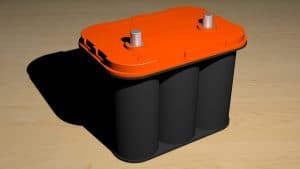APAC to remain dominant region due to key battery OEMs demanding preference of Li-ion battery materials suppliers in close proximity, finds Frost & Sullivan.

China, Japan and South Korea in Asia-Pacific (APAC) are proving to be lucrative markets for Lithium (Li)-ion battery material suppliers, as they host numerous leading Li-ion battery original equipment manufacturers (OEMs). These OEMs prefer their suppliers to be located close to them, as it facilitates supply and customization. North American and European battery material suppliers will establish mass production facilities for Li-ion battery materials in APAC due to low-cost production and the accessibility of raw materials. Frost & Sullivan forecasts the global battery materials market to reach $43.2 billion in 2023, growing at a CAGR of 8.3 percent through 2023.
Frost & Sullivan’s recent intelligence, Global Analysis of Battery Materials Market, Forecast to 2023, examines the battery materials used in lead-acid and Li-ion batteries. The key Li-ion sub-segments include materials for cathode active, anode active, electrolytes, and separators.
“There will be a ready market for materials that provide higher energy density and power capability, longer cycle life, and improved thermal stability in electric vehicle (EV) applications,” said Vishnu Karthik, Senior Industry Analyst, Visionary Science. “Nickel Cobalt Manganese Oxide (NCM) (1:1:1) has emerged as an ideal material that offers superior performance across these attributes.”
Successful growth strategies adopted by battery material suppliers include:
- Establishing partnerships – For instance, BASF’s battery materials unit works with academic and industrial participants to enhance current and future technologies like NCM materials and Li-S batteries, respectively.
- Expanding by opening a manufacturing facility in other regions – Daramic LLC set up a high-performance polyethylene separator manufacturing facility in India to cater to local demand for start light ignition (SLI) batteries and UPS, among others.
- Offering one-stop solutions – Companies such as American Elements, Targray, and Solvay offer a comprehensive product range that includes cathodes, anodes, electrolytes, and separators. This has allowed them to position themselves as end-to-end solution providers.
- Use of high-performance materials – Advanced materials like ceramic-coated and thin-film separators are set to gain momentum due to their higher mechanical strength and thermal shutdown features. These properties make them ideal for consumer electronics applications like smartphones, laptops, computers, and gaming devices.
“While Li-ion is the faster-growing segment, lead-acid is the bigger market segment with most of the demand coming from automotive SLI battery,” noted Karthik. “Telecom, household and industrial inverters, motives, and e-bikes are other key applications gaining momentum in the lead-acid segment due to rapid urbanization and initiatives to utilize renewable energy resources more efficiently.”




























